Imhotep (and a New Dynasty expansion) — A great legacy
We’ve been compelled to unearth Imhotep inorder to find out what kind of treasure it might hold.
Designer Phil Walker-Harding is well known for his fast paced games that use tight mechanisms to deliver satisfying outcomes, including the likes of Sushi Go and more recently, Barenpark. Sitting somewhere between these modern classics in terms of weight is Imhotep, one of Walker-Harding’s largest games. With its recent expansion, a New Dynasty.
At first glance, Imhotep is attractive but understated. There is none of the bright livery that you might associate with ancient egypt; there are no rich purple or red colours and no golden pieces to fondle. Instead, the players each take control of a bag of plainly coloured stones. Brown, black, grey and white to be exact, with the only distinguishing feature being that these cubes are larger than you’ll find in most games.
As the eye wander to the other contents within the box, the players will begin to explore the numerous boards that feature in Imhotep. There are five of these in the base game, plus five more that come in A New Dynasty, and only five will be used in any one game. Since each and every one is double sided, this offers twenty individual boards which can be combined in numerous ways.
Each board is its own miniature competition — a different way for the players to compete and score points. Some of them offer relatively straightforward or even non-competitive methods for scoring, whilst others are highly interactive and can have elements of risk associated with them. A New Dynasty introduces a chariot race (including little chariot meeples) whilst one of the base game tiles encourages the players to simply build monoliths.
All of these boards involve placing those unassuming looking blocks onto the individual boards, but what makes Imhotep really interesting is how the stone actually reaches a board. This process is linked to four reed boats and each round lasts until these boats have sailed. As the round plays on, these boats will be filled with stones placed there by the players, until someone — anyone — decides to sail.
Of the actions available to players in Imhotep — placing a stone, passing and drawing more stone from the supply to your personal quarry or sailing — there’s no doubt that sailing is the most key. Boats can be loaded with stone from any mix of players and when a player chooses to sail the boat, it doesn’t matter whether they have any stone on it or not. Despite having only three actions, the criticality of when to load a boat, when to draw new stone and when to sail becomes crucial.
As an example, it might seem like an excellent situation to have a large boat (four spaces) filled with your own stone, but what if you do fill that boat and someone else sails it to a location where only one of your stones will score? Or perhaps take it to the market where you’ll be able to draw four cards, but that’s small comfort when the preferred plan was to score upwards of ten points somewhere else.
These core decisions are most certainly the game of Imhotep, but that does not mean that they are the only game present. As I mentioned before, each board is its own mini game, and it is these mini games that inform the decision making process. I can’t stress enough how clever you’ll feel when you manage to create a situation in which your stones will score well no matter what, whilst similarly, spotting and sabotaging an opponent’s big score is just as satisfying.
Aside from its simplicity and its accessibility, one feature that makes Imhotep such a good family or gateway game is that it always finishes with very close scores. In an average four player game, you’ll struggle to see more than a five point spread, whilst at two players, it will very likely be a matter of one or two points between two well matched players.
This closeness of outcome, alongside the satisfying decisions in Imhotep, allows players to feel like they’ve done an awesome job, even though it’s actually the strength of Walker-Harding’s design that keeps things moving towards a tight conclusion. I suppose on that note, players who want to have full agency over every action and to watch their master plan come to fruition every single time might feel frustrated for the same reasons.
Before I sign off, I should say a specific note about A New Dynasty. In addition to five new boards, this expansion includes a deck of new market cards and a set of God cards that can allow players to score points based on achieving various objectives. Coins are also introduced, allowing players to simply buy marketplace cards, rather than parking a boat at the market. Personally, I like the new boards and the market cards are fine, but I tend to leave out the additional elements since I feel that they add clutter to an otherwise very clean design.
Imhotep is a very interesting and unique addition to the game shelf of any fan of lighter games that still retain a puzzle solving element. Players who can process point scoring opportunities and look two or three moves ahead, whilst also being able to respond to setbacks will really enjoy it. Imhotep‘s understated looks also make it an attractive looking game to setup, and there are lots of small details and areas of historical interest for young players to enjoy.
Imhotep and A New Dynasty are available for purchase right now. You can find out more about the base game here.
Love board games? Check out our list of the top board games we’ve reviewed.


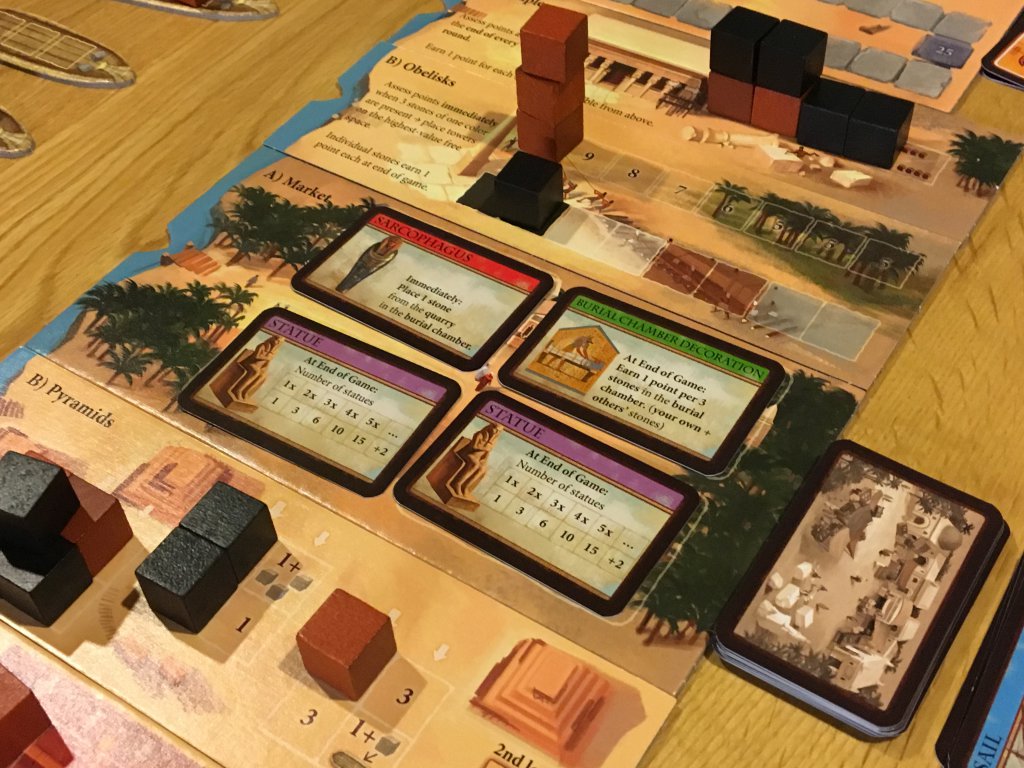
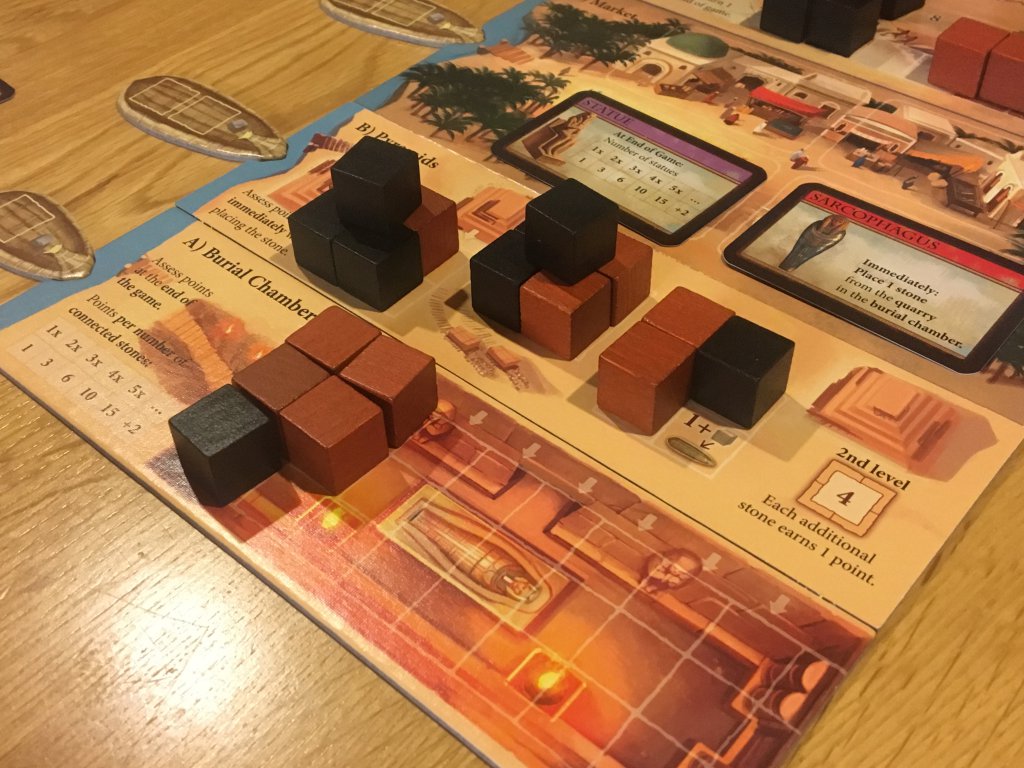
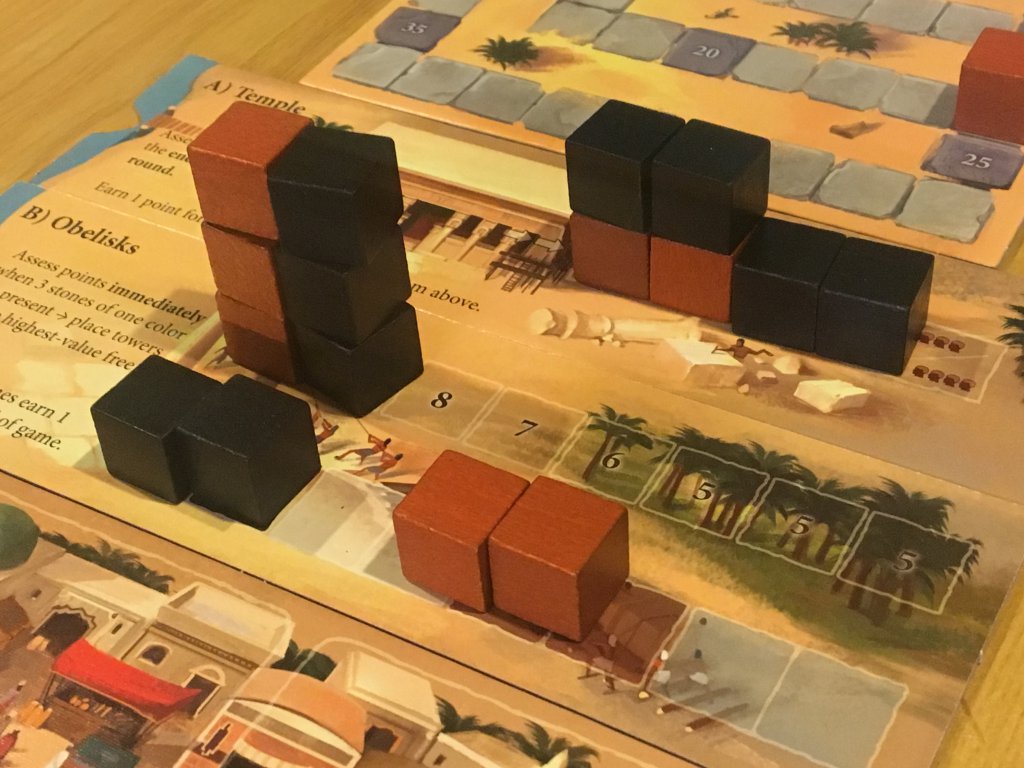
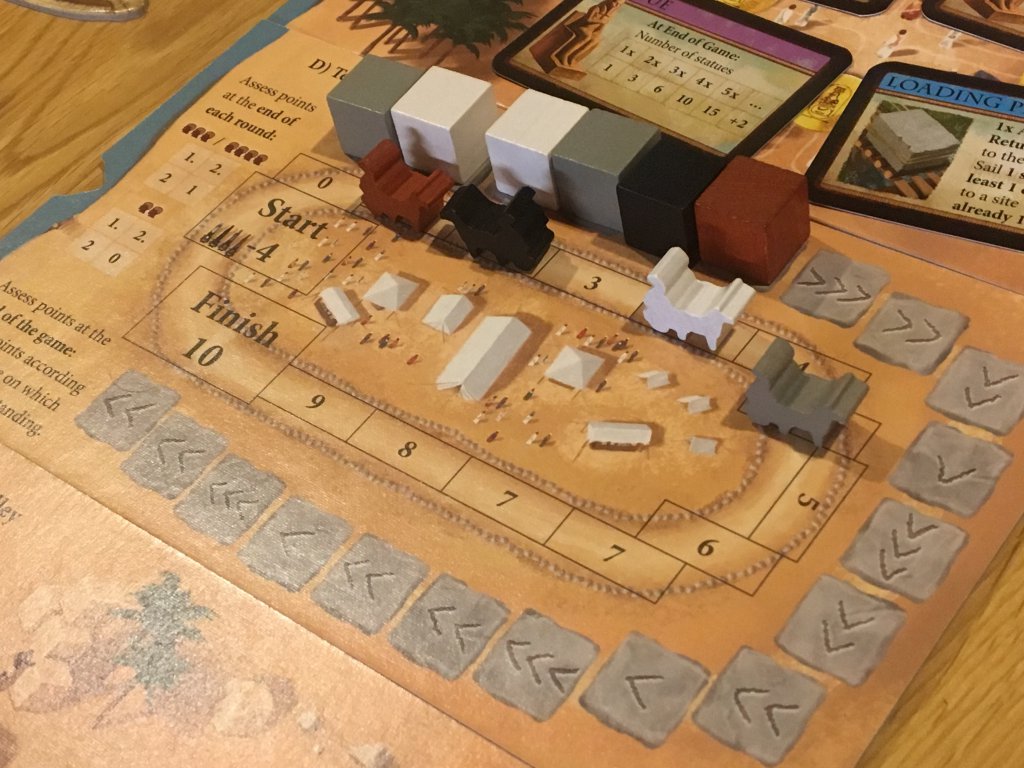
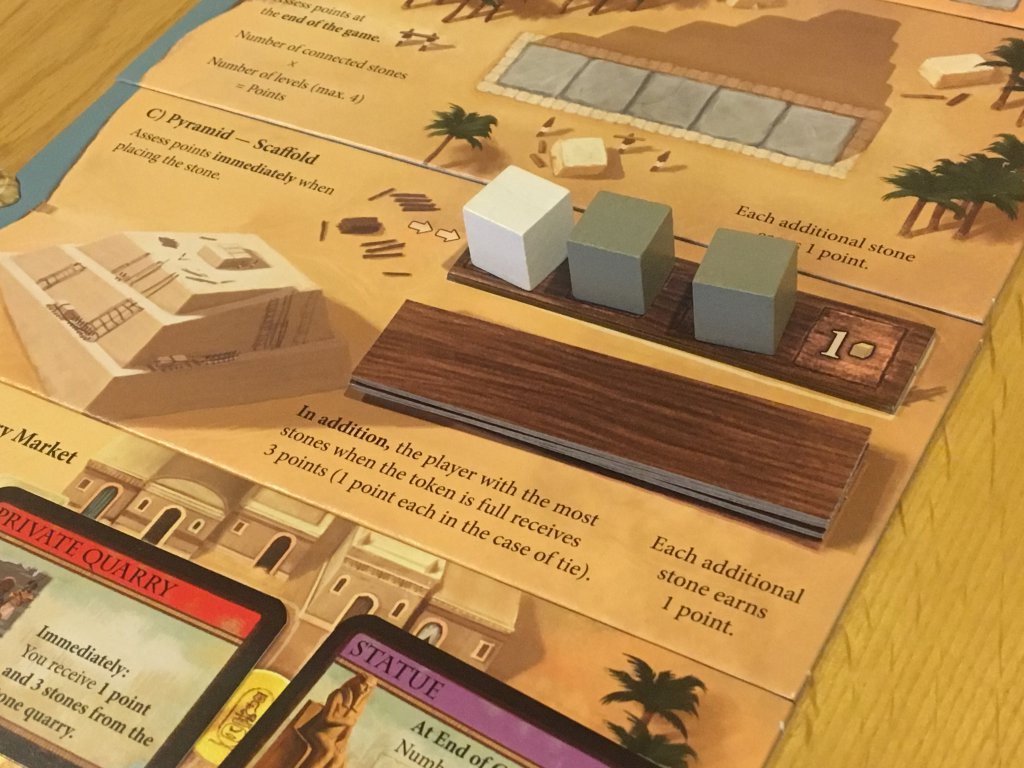
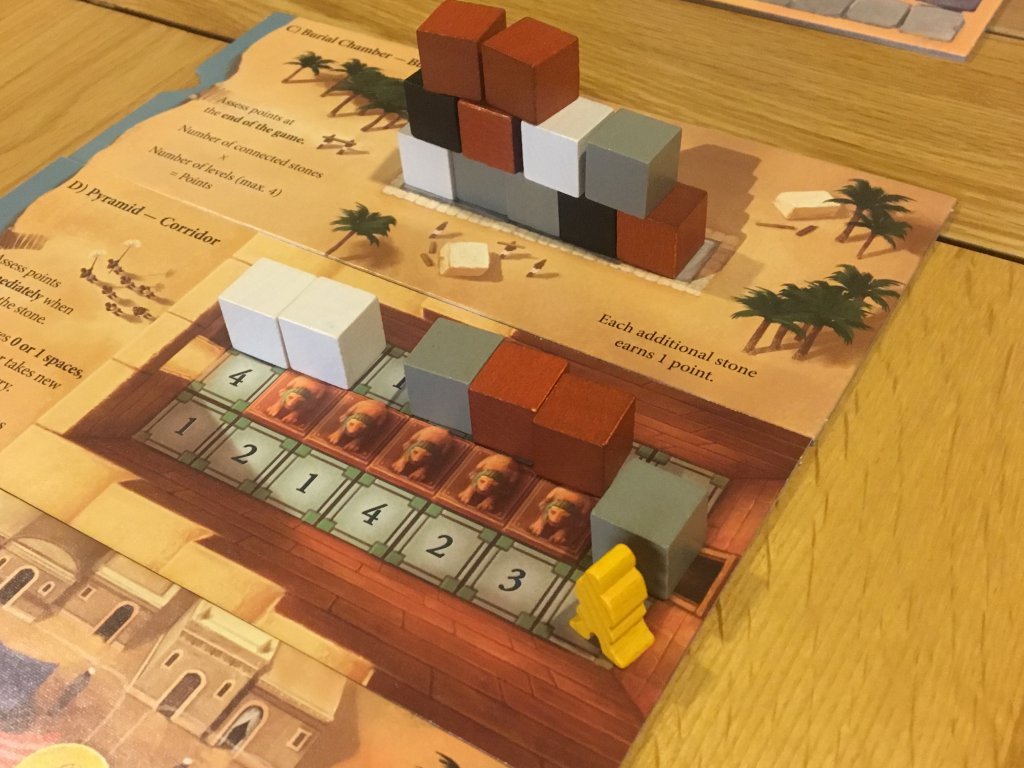
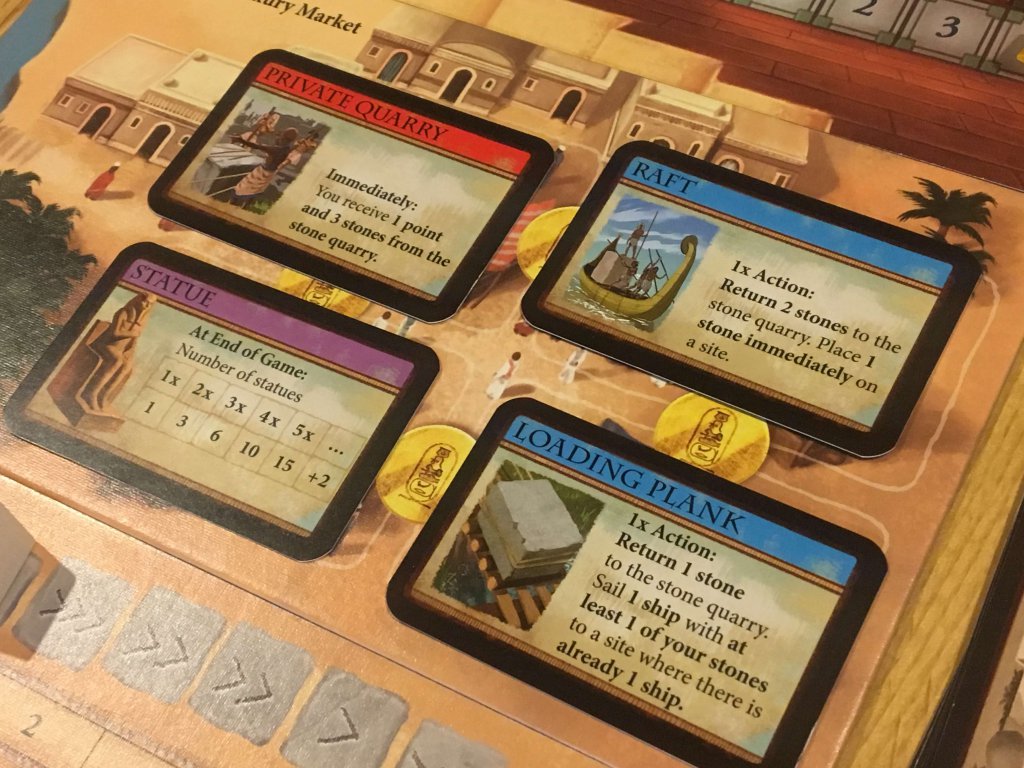
Comments are closed.